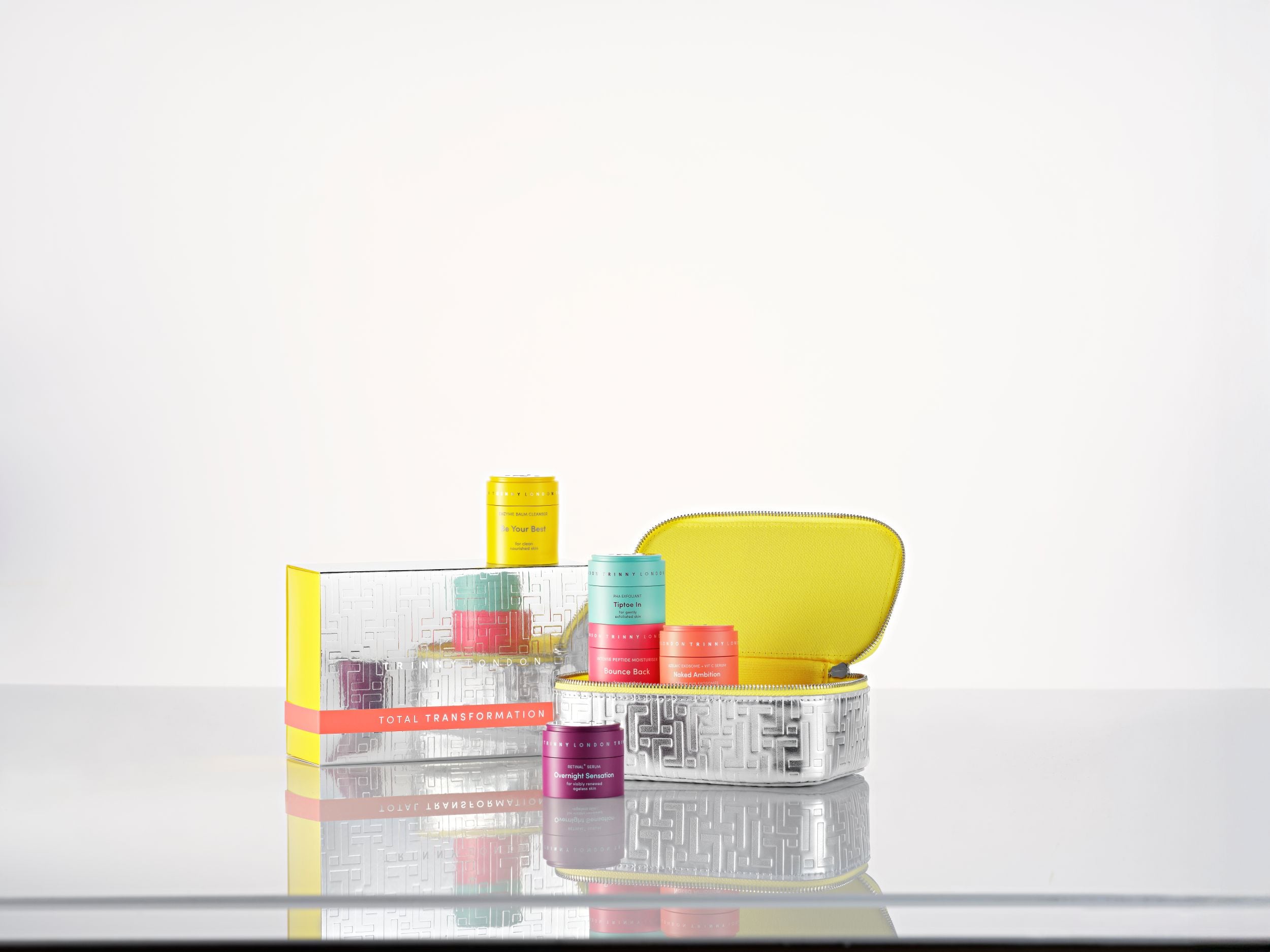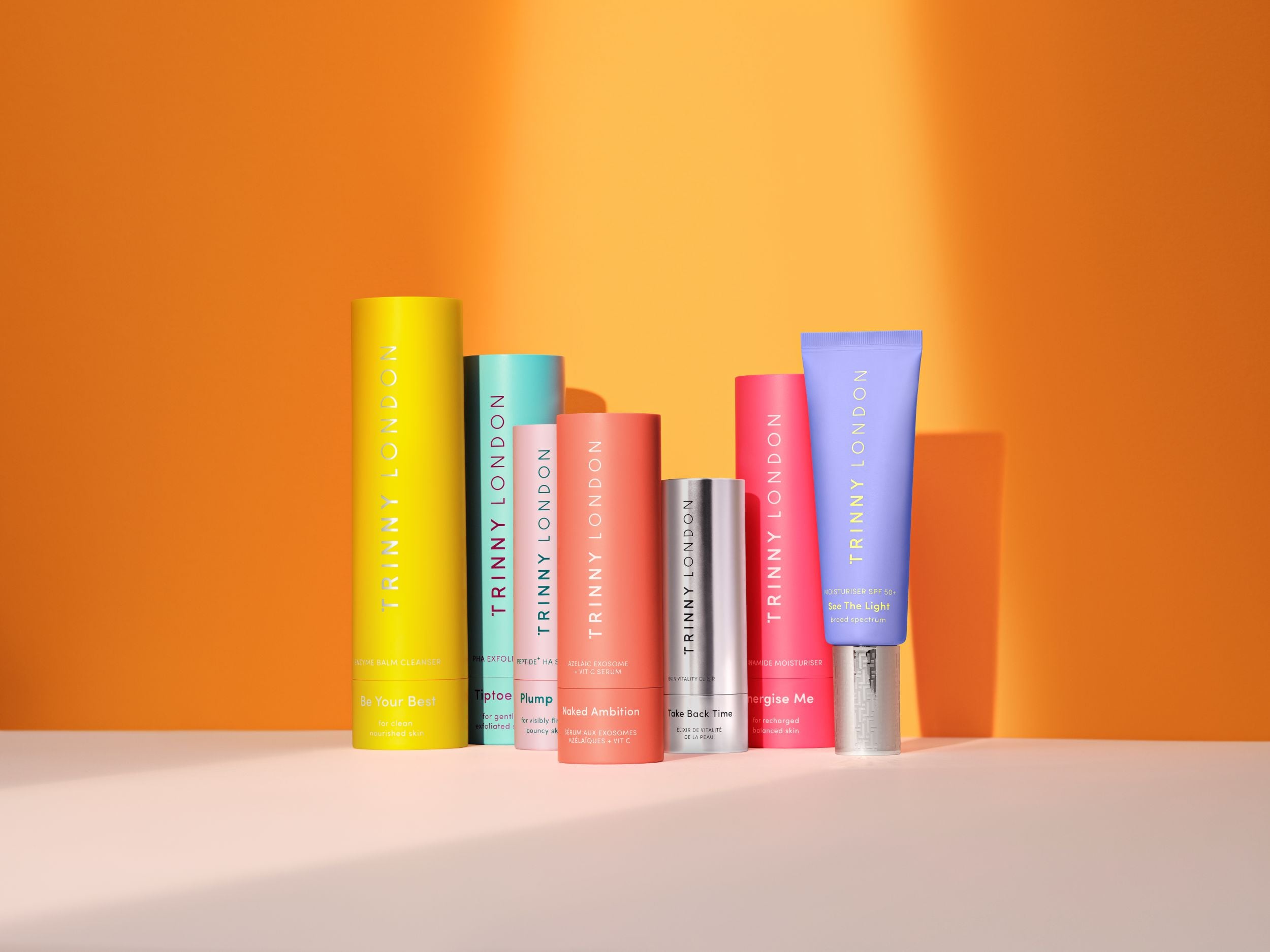Key takeaways
- Trinny London achieved £70M annual sales in eight years through consumer-led innovation.
- Its NPD process integrates formulation, packaging, and regulatory compliance from day one.
- Global expansion relies on early regulatory planning and operational agility.
- Future beauty trends focus on personalisation, authenticity, and measurable results.
UK-based beauty brand Trinny London was founded in 2017 and, over the past eight years, has grown into a global beauty brand generating £70M in annual sales, which the brand attributes to its hyper-focused innovation strategy.
Consumer-led innovation: the heart of Trinny London’s strategy
According to the brand’s Chief Innovation Officer, Claire Byrne, the best innovation starts with a deep understanding of your community, which then translates into strategies that are relevant and commercially sound.
Byrne said that Trinny London has worked in partnership with its consumer base to create certain products.
“Our product development is grounded in deep, ongoing dialogue with our community,” she said. “Much of that begins with Trinny herself, as she brings over 20 years of experience working directly with women and has created an emotional connection and dialogue with her audience at a key point in their lives when they want to focus back on themselves – a point of transformation – and give them the tools to help them be their best selves.”
For Byrne, as Head of Innovation, this insight is invaluable and shapes the company’s NPD process. For example, its recently launched Naked Ambition serum was developed in direct response to its community telling the brand that they were covering up their skin concerns with heavy concealer and foundation, often feeling unable to wear lighter makeup because they felt their skin was too red or their skin tone too uneven.
“So, we asked ourselves: how can we treat uneven tone, redness and brightness in a formula that can be used under makeup, and deliver real results? And the answer was Naked Ambition – a ‘global-first’ innovation combining slow-release vitamin C with azelaic acid exosomes that are clinically proven to help reduce redness, dullness and uneven tone,” she said.
From concept to shelf: how agile NPD drives global scale
Byrne is also quick to add that innovation rarely follows a linear path and sometimes the team must pivot, compress timelines, or adjust plans to keep things moving.
Its new product development process normally takes anywhere between 12 to 36 months, and creating Naked Ambition took the team 52 prototypes to get the right formula, texture and efficacy.
“We do not compromise on performance so if it’s not right, we move the launch,” she said. “Sometimes though, we need to adapt our approach when bringing a product to the global market,” she said. “For example, with SPF we need to follow different complex international regulations in the UK/Europe, USA and Australia – something our Product Integrity team oversees meticulously. So, we might launch in the UK/Europe first while working on different formulas for other markets that meet local requirements.”
The future of beauty: personalisation and purpose-driven design
Byrne said the brand also believes that owning the product from concept to shelf is critical to make sure that creative intent evolves into scalable, high-performing products.
“My role spans product strategy, NPD, R&D, packaging, regulatory and launch,” she said. “What that means day-to-day is overseeing a full-spectrum development process: starting with founder insight and consumer need, through to formula creation, testing, packaging engineering, claims testing and regulatory compliance.”
Byrne’s team is made up of chemists, scientists and engineers – integrating formulation and packaging in parallel to ensure every product delivers both functionally and scientifically.
“We not only designed our formulas to deliver skin transformations from the very first use but we developed our packaging to bring joy, with bright colours that are not only easy to navigate but make you feel good when seeing them in your bathroom,” she said.
“That integration is what allows us to connect emotionally with our customers. Beauty is deeply personal – so the way a product feels and looks, the way it slots into someone’s daily rhythm, and the confidence that it gives – all of that matters. It’s not just about delivering efficacy, it’s about delivering it in a way that feels intuitive, joyful and empowering.”
Essentially, Byrne said this integration enables the brand to create products people can trust and genuinely want to use daily and therefore build lasting loyalty.

Although it started life in the UK market, the brand has more recently expanded globally. On this point, Byrne said that embedding regulatory excellence and operational agility early was key to allowing the brand to scale without losing authenticity or quality.
“Global scale doesn’t happen after the product is built – you have to plan for it from day one,” she said. “For us, that means thinking about regulatory complexity, market localisation, and operational readiness as part of the product development process, not separate from it.”
“Every market has its own evolving standards – from ingredients to labelling – so we’ve built that compliance into the development cycle early. It’s how we can expand across the globe without needing to backpedal or rework the product post-launch.”
From a systems perspective, Byrne said Trinny London has designed the innovation function to integrate closely with procurement, supply chain, and operations. “That gives us the agility to adjust lead times, navigate supplier constraints, and manage multiple manufacturing channels – all without losing the quality and integrity of what we’re building,” she said.
Agile, quality-driven execution has also been key for the brand. Innovation isn’t just about ideas – it’s about disciplined delivery. Balancing creativity with precision ensures products reach the market on time, on budget, and without compromise.
Looking to the future, Byrne said that purpose-driven innovation is where the beauty industry should be heading.
“Consumers want authenticity, efficacy, and integrity, not empty claims or trend-driven launches. For us, that means designing for real skin, not shelf appeal, and creating products that deliver measurable results while empowering confidence at every age,” she said.
One area that she sees as key to this is product personalisation. The brand created its Match2Me platform to help its customers understand what their skin needs, and why. “It’s about giving people the tools to make informed choices, based on their real concerns and routines, not on prescriptive beauty trends,” she said. “It’s also where technology can empower, not overwhelm.”
While Byrne is adamant that the future of the beauty industry is personal, informed, and science-led, she doesn’t see this as the death of creativity either.
“It’s the end of purposeless innovation – the kind that forgets who it’s serving,” she said.





